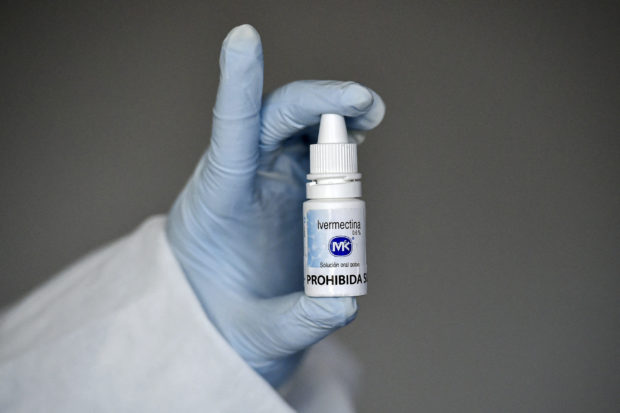In a world at war against COVID-19, is ivermectin (IVN) a weapon of choice?
COVID-19 poses a clear and present danger to our lives and livelihoods. In war, people protect themselves and fight to survive. Critical decisions are made by a person, family, or community as a matter of life and death. Medical doctors and nurses tend to the sick and wounded with limited supplies using improvised procedures. Governments are on emergency response mode and strict rules of peacetime are bent or broken during wartime.
Comes the raging issue of adding IVN to the armamentarium against COVID-19. There are staunch pro-IVNers and fierce con-IVNers. Consider the ethics of using IVN. Ethical decisions are based on judgments of right or wrong, good or bad. Would personal choice to use IVN against COVID-19 based on knowledge and understanding of its risks versus its benefits be ethical? Should medical doctors (MDs) provide information and advice to patients on IVN use? Should government relax regulations and make IVN available to the public? Should the public purchase IVN on prescription? Should off-label use of IVN be allowed for COVID-19?
The Philippine-American Academy of Science and Engineering (PAASE) has a summary of data and analysis on IVN posted on its website: www.paase.org. These were presented by MDs and PhDs in two PAASE “fireside chats” on the pros and cons of IVN on March 31 and April 9. The chats were attended by hundreds of MDs and lay persons on Zoom and thousands on YouTube. It tells us that IVN is an important public issue.
PAASE also conducted an online survey on IVN where 553 MDs responded. Results showed that more MDs are in favor of prescribing IVN for prevention and treatment than MDs who are opposed or undecided. An even greater number of MDs favor conducting clinical trials on IVN for prevention and treatment of COVID-19. Almost all MDs want more information on IVN. Results are posted on the PAASE website.
What’s the risk of taking IVN? Pros say nil; it’s a safe, nontoxic drug. Out of over 3.5 billion people who took it over the last 30 years, only 5,156 got sick and only 16 died—statistically low or insignificant figures (vigiAccess Pharmacovigilance). The cons say toxicity shows up at the higher dose required for COVID-19. The pros say IVN has a wide therapeutic window of safety. The cons point out cases of neurotoxicity. The pros say those are isolated cases, and IVN, a big molecule, does not cross the blood brain barrier.
Regarding the benefits of IVN, the cons say its efficacy for COVID-19 is not established based on randomized clinical trials (RCTs). It’s not a cure, much less a prophylactic measure, and there is insufficient evidence for it. The pros say there is sufficient evidence both as treatment and preventive based on RCTs and observational studies.
Where lies the difference in the data and analysis of the two groups? It’s in the studies selected for inclusion in the meta-analysis: The cons accept only the purest, homogenous selection for meta-analysis of RCTs, while the pros accept a more heterogeneous selection of RCTs and observational studies reflective of practical realities. Check out the Forest plots on the PAASE website.
What are ways forward in the midst of this lack of consensus? Action by the Food and Drug Administration, the regulatory agency, is critical.
Already, we are faced with the unregulated proliferation of IVN. How can we defend against fake, low quality products in the market, sold in the gray market, without quality assurance of their formulations?
Can government provide its citizens another well-regulated option in IVN along with the other medicines, vaccines, and non-pharmaceutical interventions which have been authorized for emergency use?
Good science recognizes uncertainty. Even for many interventions against COVID-19 already on offer (e.g. vaccines), there are no absolute truths.
But this we know: Even while we argue about IVN, the virus replicates and mutates at a very fast rate if it is not stopped. IVN offers good in vitro evidence that it can stop viral replication. And that is possible because of its large, multi-faceted chemical structure with many pharmacophores. The chemistry also explains its nontoxicity.
Shouldn’t the FDA take a chance on IVN under conditions of war?
Manuel M. Dayrit, MD, was dean of the School of Medicine and Public Health, Ateneo de Manila University (2013-2019); director, Department of Human Resources for Health, WHO Geneva; secretary, Department of Health (2001-2005). Gisela P. Concepcion, PhD, is president of PAASE (2020-21), professor emeritus, University of the Philippines Diliman; academician, National Academy of Science and Technology. Leodevico L. Ilag, PhD, is chief scientific officer, Xerion Australia; chief scientific officer, Horizon Science (2011-2014); chief operating officer, Patrys Limited (2004-2007). Email: mdayrit@ateneo.edu, gpconcepcion@up.edu.ph, vilag2001@yahoo.com
